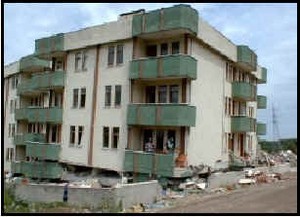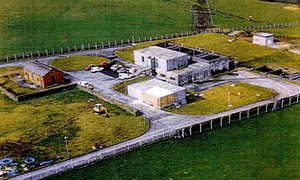Causes of emergency situations
Emergencies are sudden, unexpected, hazardous situations where there is a need for an immediate response. They can cause severe disruption because they are unexpected. Resources are needed to cope with an emergency and they may have to be brought in from outside.
Everyone will have to deal with emergencies in life at some time or another. Can you think of an emergency that has occurred in your life? You can probably think of many. The last one that I had was when a pipe burst in my mother’s house. It was late in the night, and I had to take my friend Kabede with me (as an outside resource) to help fix it, because I am useless at plumbing.
A water emergency, such as the one described above, is an event that disrupts the normal supply of water. In town, it can occur due to natural causes or when there is damage to the major infrastructure of the treatment plant, water storage or water distribution system. Untreated or partially treated water may be inadvertently distributed in an emergency situation.Another cause of a water emergency could be contamination of the water supply, for example by a chemical leak.
As you can see, there are several different types of emergency that can affect water supply and some of these are described in the sections that follow.
Drought
A drought occurs when there is a deficiency in precipitation over an extended period of time, resulting in a water shortage. You are probably familiar with the consequences of a drought. The lack of rain means that the water flow in rivers is reduced, lakes and pools shrink in size or may dry up, groundwater and soil moisture are depleted, and crops are damaged. Prolonged drought can lead to a major national and regional food insecurity crisis. Domestic animals might also die (Figure 14.1).

Figure 14.1 Drought causes loss of life and livelihood.
Ethiopia has been associated with drought for a long time and many people have suffered from its effects. For example, in the drought of 1985 in the northern part of the country, an estimated 800,000 people died due to malnutrition and disease.
During a shortage of fresh water during a drought, people may be forced to use unprotected water supplies. Furthermore, people and animals may use the same water source, which increases the risk of contamination of that particular water source. This leads to increased exposure to waterborne diseases (such as diarrhoea and dysentery) and water-washed diseases (such as trachoma).
Flooding
Flooding is an abnormal rise in the water level and may result in overflowing of streams or rivers.Flood waters can destroy infrastructure, including houses, roads and water supply systems, as well as agricultural crops, which ultimately causes a shortage of food supplies in the country. Besides the destruction of property, people and animals may be killed, especially when flash floods occur. (A flash flood happens when rain falls so fast that the underlying ground cannot drain the water away fast enough and rivers overflow their banks. Roads can then become like rivers and if there is a lot of water it can flood buildings and carry cars away.)
Floods can cause widespread bacterial contamination of wells and surface water sources with faecal matter washed from the ground surface or from flooded latrines and sewers, resulting in the outbreak of disease. For example, cholera commonly occurs after flooding.
Earthquake
An earthquake can cause serious damage to infrastructure on and in the ground (Figure 14.2). Pipes and treatment plants will be destroyed by a high-magnitude earthquake and the communication systems (such as road and rail networks) often become non-functional, making the delivery of emergency water supplies difficult. Destruction during an earthquake can also cause chemical spillage at manufacturing plants and warehouses, which can lead to widespread chemical contamination of drinking water.

Figure 14.2 A building in Addis Ababa damaged by an earthquake.
Events caused by human intervention
It is possible that a deliberate attempt could be made to poison a water supply as an act of terrorism, but it is far more likely that human causes of water emergencies will be due to accident and neglect. There can be instances where the water supplied will be unfit for human consumption as a result of an accident – Box 14.1 describes such a case at a water treatment works in the United Kingdom.
Box 14.1 An example of a human-caused water emergency in the UK
In July 1988 in Camelford, a small town of 20,000 people in south-west England, 20 tonnes of aluminium sulphate was dumped into the wrong tank at the local water treatment plant (Figure 14.3) by a chemical tanker driver who was not familiar with the plant layout and delivery procedures.Aluminium sulphate went directly into the mains water supply, and this became the worst water poisoning incident in Britain. Residents complained because the water coming out of the tap was black, and curdled the milk in their tea. One man described how his hair had stuck together after he took a bath, as if his head had been smeared with glue. Symptoms such as stomach cramp, diarrhoea, skin rashes, joint pain, sore throat, short-term memory problems and general exhaustion were reported.

Figure 14.3 The water treatment plant at Camelford.
Aside from accidents, human neglect is the other most likely cause of a water emergency. Case Study 14.1 illustrates how neglect can lead to a water crisis, although it does not fit the definition of an emergency because it was not sudden.
Case Study 14.1 Water supply in Harar
Harar is a city in the eastern part of Ethiopia, 505 km from Addis Ababa. The city used to get water from Lake Alemaya (Haromaya), but since February 2004 the supply has ceased.
The water treatment plant at the lake was originally designed to serve a population of 70,000 but in 2000 the plant was supplying 160,000 people, who lived in Harar City, two small towns and at Haramaya University.
Lake Alemaya (Figure 14.4) has at its edge the town of Alemaya to the south and southwest, Haramaya University to the east, and farming communities to the north and northwest. In the mid-1980s its maximum depth was around 8 m and it covered an area of 4.72 km2. It was an attractive freshwater lake used for drinking water, irrigation, fishery and recreation. Farmers in the surrounding community used a tremendous amount of fertiliser to grow different crops, in addition to khat, and excess fertiliser used to end up in the lake. Wastes containing chemicals from the town were dumped at the shore of the lake in indiscriminate and irresponsible ways.

Figure 14.4 (a) Lake Alemaya before 2004; (b) the lake after 2004.
The depletion of water from the lake started slowly and no protective conservation measures were taken by anyone, although it was plain that the water level was dropping year on year.
After the water had nearly gone, the city faced a serious water shortage and water rationing was introduced. Responding to the acute water shortage in Harar, many individuals in central government and non-governmental organisations were involved in a programme to combat the emergency. Water tankers were used to transport water to the town dwellers from distant available sources (Figure 14.5). This emergency operation continued for more than a year until deep wells were dug 20 km away to supply water to the residents again.

Figure 14.5 Tankered water supplies for residents of Harar in 2011.